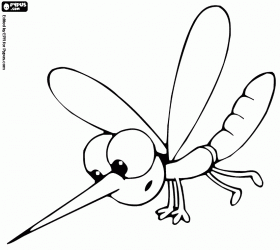Abstract
This paper discusses a specific category of information systems known as Ambient Information Systems. These systems present information in a non-intrusive manner, acting mostly on the periphery of our attention, following Mark Weiser’s concept of calm technology.
The major concern that drives the development of these systems can be summarized in two aspects: first, as pervasive computing increases, ordinary objects are becoming capable of processing and displaying data, thus the consumption of information will occur in many different contexts, which may contribute to an information overload, generating stress. The second aspect is that Design plays a major role in developing better ways to deal with this information overload. For a long time designers have been studying how to design communication systems that drive our attention, but little research has been done in exploring how to design communication systems that act upon the periphery of our attention.
In this paper four Ambient Information Systems are discussed, highlighting their characteristics and limitations. As a conclusion, the author proposes an agenda of topics that should be tackled to advance future research on this subject.
* * *
Amid the rush and bustle of urban centers, we are exposed to many different information systems [1]. Although the presence of such systems can be easily perceived, it is possible to go by without noticing them, usually because we don’t feel the need to consult the data they present, or because we have our attention focused on other tasks. Public clocks, traffic status displays, are some of the most obvious examples of these systems. Advertising posters and outdoors that populate our urban landscape are also information systems with which we deal every day and often go unnoticed. Their presence does not require our immediate attention, staying mostly on the periphery of our perception. When these information systems are augmented with computer technology, they are also called peripheral displays (Mankoff & Dey, 2003).
Much has been said about the overwhelming amount of information to which we have been exposed lately. This is partially due to the increasing use of computers in the beginning of this century, which not only has made it easier to produce and distribute data, but also has increased the connectivity between different systems, cultures and people all over the world. The changes we experience are so intense that it is common to use terms like “digital revolution”, “information technology revolution”, “information revolution” to describe them. The word “revolution”, common to these definitions, implies that radical changes are underway, in the sense that there is a rupture, which extends from the global economy to the private activities of an individual.
As a side effect of this digital revolution, information now comes from many sources and in different formats, such as text messages and Twitter tweets in our mobile phones, RSS Feeds, Facebook friend’s updates, instant messages on our desktop computers, e-mail, and so on. Although it seems to be almost impossible to keep track of this amount of data on daily basis, as Hemp (2009) points out, we’re still compelled to do so, even if it make us feel uncomfortable:
The flood of information that swamps me daily seems to produce more pain than gain. And it’s not just the incoming tidal wave of e-mail messages and RSS feeds that causes me grief. It’s also the vast ocean of information I feel compelled to go out and explore in order to keep up in my job (Hemp, 2009, p.2).
As ubiquitous and pervasive computing increases, ordinary objects are becoming capable of processing and displaying information. Therefore, the consumption of information will occur in many different contexts and situations, which may contribute even more to this information overload, generating stress in a higher level.
Design plays a major role in developing better ways to deal with this information overload. Although designers have been studying how to design communication systems that drive our attention for a long time, little research has been done in exploring how to design communication systems that act upon the periphery of our perception. Considering that not all information needs to be in the center of our attention all the time, we should investigate innovative ways to present information into the periphery, taking advantage of our preattentive processing. As Weiser and Brown described, “By placing things in the periphery, we are able to attune to many more things than we could if everything had to be at the center. Things in the periphery are attuned to by the large portion of our brains devoted to peripheral (sensory) processing. Thus, the periphery is informing without overburdening” (Weiser & Brown, 1996, p.9).
Ambient Information Systems describe a set of applications that publish information in a non-intrusive manner, mostly acting on the periphery of our attention. The community of Human-Computer Interaction professionals has been exploring this subject for a while, but with little participation of the Design community. Although there are already interesting results on ambient information systems, I believe that Design has much to contribute to advance the research in this area. In this article, some ambient information systems are discussed, highlighting their characteristics and limitations. As a conclusion, I propose an agenda of topics that should be tackled to advance future research on this subject. In order to be able to deal with this increasing information overload, we should have a better understanding of what it means to design for the periphery of our attention.
Ambient information systems
Ambient Information Systems are information systems that continuously present information that can be monitored by people without requiring the focus of their attention. In these systems data is presented mostly to the periphery of human attention. Presenting outside the main focus requires less cognitive effort for its consumption. This form of information delivery has manifested in several different implementations, but the overall theme revolves around how best to embed information into our surroundings (Hazlewood et al, 2008).
In these systems the major concern is how to present information in a discreet way, without being necessary to stop any activity to perceive them. In a world with an increasing number of information sources, which can be accessed from many devices and in different contexts, Ambient Information Systems represent an attempt to minimize the effort required to keep up with so much data. This concern is intensified with the rise of pervasive computing, as the most common objects may become information systems. It is necessary to find alternatives to prioritize the sources of sensory stimuli around us. An interesting strategy is to relegate to the background of our attention the information that is not essential, but which we can access at any time.
One of the earliest known examples of this type of information system is the Dangling String (also known as Live Wire), a project developed by artist Natalie Jeremijenko at Xerox Palo Alto Research Center (Xerox PARC). This system was in fact an installation in which a plastic wire was connected to an electric motor installed in the ceiling of a room. The engine was connected to the network of the institution by an Ethernet cable, so that the flow of network data directly interfered in its motion: when there was a heavy data flow, the engine turned faster, while a reduced flow caused the motor to turn slowly. The plastic wire followed the movement of the engine, producing a noise when moving fast. The combination of movement and noise was easily perceived from a distance, without interfering in any action that was occurring. The idea of the installation was not to accurately report the amount of data traveling through the institution network, but to give a sense of its flow and enable people to have a visual cue that could be associated with data traffic.

Figure 1: Dangling String (http://nano.xerox.com/weiser/calmtech/calmtech.htm)
The Dangling String is a typical example of an ambient information system. These systems usually present information in a discreet way, without drawing too much attention to itself, giving constant support to the monitoring of non-critical information.
This concern with discretion and with a non-intrusive information presentation has its roots in the work of Mark Weiser, precursor of research in ubiquitous computing. Unlike much research on computers occurring at that time, when he started the program on ubiquitous computing in the late 80’s, Weiser was less interested in technical issues and more in the context of use or the impact that the increasing presence of computer technology would have on our lives:
The program was at first envisioned only as a radical answer to what was wrong with the personal computer: too complex and hard to use; too demanding of attention; too isolating from other people and activities; and too dominating as it colonized our desktops and our lives. We wanted to put computing back in its place, to reposition it into the environmental background, to concentrate on human-to-human interfaces and less on human-to-computer ones (Weiser, Brown & Gold, 1999, p.693).
In anticipation to the proliferation of information sources competing for our attention due to the integration of computing devices to everyday objects, Weiser showed special interest in making the use of these systems simple. The goal then was to make the computers “disappear” into a given task and become as a simple tool that could be used without demanding our attention:
In the last several years a few of us at PARC have begun to speak of calm computing as the goal, describing the desired state of mind of the user, as opposed to the hardware configuration of the computer. Just as a good, well-balanced hammer “disappears” in the hands of a carpenter and allows him or her to concentrate on the big picture, we hope that computers can participate in a similar magic disappearing act (Weiser, Brown & Gold, 1999, p.695).
Weiser, Brown and Gold believed that the most profound technologies are those that “disappear” by being so embedded in our lives. As stated by the authors, the idea of calm technology indicates a stage of computing evolution in which we use this technology without realizing it. It is precisely the idea of calm technology that underpins many of the ambient information systems. The information almost “disappears”, being presented in a discreet manner, but can be easily brought to the center of our attention and used whenever necessary. This displacement between periphery and center of our attention is one of the main features of calm technology.
It’s important to notice that in what regards Ambient Information Systems, information is meant to be perceived, which implies a specific type of communication. Ambient Information Systems are not suitable for complex data, which require detailed analysis. Rather, the intention is to present data in a subtle way, so that the information is perceived without effort and causes no disturbance. Normally, the Ambient Information Systems are used in situations that are not task oriented, that do not require immediate action in response to the information displayed. This type of interface does not apply, for example, to an air traffic control terminal, where operation requires a high level of attention from its operator. As highlighted by Weiser and Brown (1996), not every situation is suitable for a calm technology approach. Designing systems that act on the periphery of our attention requires special care:
Not all technology need be calm. A calm videogame would get little use; the point is to be excited. But too much design focuses on the object itself and its surface features without regard for context. We must learn to design for the periphery so that we can most fully command technology without being dominated by it (Weiser & Brown, 1996).
As previously noted, the ability to move information between the center and periphery of our perception is a central issue for the calm technology concept, one that still guides the research on ubiquitous computing. Much research in this field seeks to develop “intelligent” products and systems which can operate independently, without our assistance. In theory, while at the same time the advances in technology allows the creation of objects with computational and informational resources, capable of communicating with each other constantly, this interconnected environment would not be a burden to us precisely because it would be possible to move the information provided by these systems to the background, without requiring our direct attention.
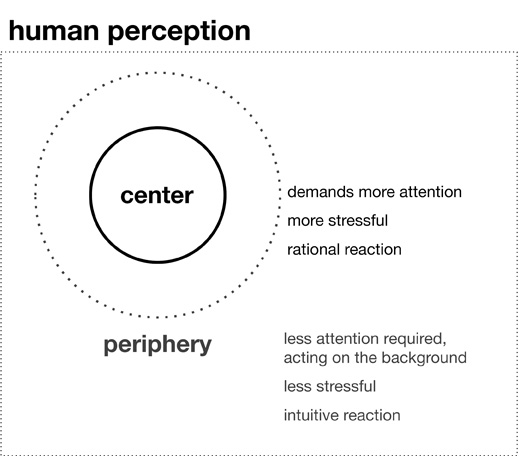
Figure 2: the center and periphery of human perception
From a more modest scope, yet aligned with the idea of reducing the cognitive effort required for information consumption, the Ambient Information Systems are an application of the calm technology concept, without requiring complex contextual data analysis or advanced artificial intelligence systems. Many projects on this field are based on the enrichment of our peripheral attention, presenting information in such a way that it can be perceived without demanding effort, assisting in the intuitive understanding of a more complex situation. This approach is also based in our preattentive processing (Healey, 2007; Healey et al, 1996), which is normally associated with visual perception, but may also occur through the stimulation of other senses (Lima, 2005).
Consider the communicative act itself, occurring through different media, as an example of this enrichment of our peripheral attention. In a telephone conversation, part of the understanding of what is said occurs by the way we talk. That is a level of information that goes beyond the “text” that is enunciated. Subtle variations in the intonation of the speech can bring more information, underlying what is said. In a similar way, in a videoconference, the image of the speakers provides more information that acts upon the periphery of our attention. By viewing the subjects and their behavior, we can have a better understanding of the discourse, even though we’re not focusing our attention to this subtle information. In e-mail communication, which relies solely on the written word, disagreements often occur due to the reduced peripheral information that could help in understanding the message, demanding greater attention to the writing of the text, what probably wouldn’t be required in a face-to-face conversation. Voice inflections, body movements and facial expressions are peripheral information that help us to communicate without requiring greater cognitive effort, as they are perceived intuitively.
To better understand how we can apply these principles to the design of Ambient Information Systems, four projects are described bellow, which in different ways deal with non-intrusive presentation of data. The limitations of these projects will be highlighted and possible improvements discussed.
Ambient Umbrella
The goal of this product is to solve a trivial problem: decide whether or not to take an umbrella when leaving home. Normally, a person would try to get informed about the weather conditions of the day to decide that. This could be done by reading the weather forecast in the newspaper, or accessing a website that provides the weather forecast, or watching the weather channel on the TV. In addition, of course, one could look through the window to see if there are any signs of rain.
In any of the options described above on how to get informed about the weather conditions, some steps would be necessary before taking a final decision on whether or not to take the umbrella. If a person does not have the signature of a daily newspaper, would have to go out and try to buy one. Another alternative is to consult the Weather Channel on TV. In the absence of a television channel with the weather forecast, and without a newspaper at home, one would have only left the option to look out the window and make a guess, or use the computer to seek the information on a website which presents the forecast for the day. This operation in turn requires more time and energy: it would be necessary to turn on the computer to access a particular site, request the information, interpret the information received, and only then would one be able to know what would be the chances of raining on that day. A series of steps to get some basic information, which would take time, require cognitive effort and certainly a good dose of patience.
The Ambient Umbrella addresses this issue in a relatively simple way. The umbrella actually “tells” you if it will rain. If the weather forecast for the day is rain or snow, the umbrella illuminates its handle. The concept is similar to the Weather Rooster (see Figure 3), which changed its color according to the humidity in the environment, indicating the possibility of rain.

Figure 3: The weather rooster (galinho meteorológico) is an interesting Brazilian predecessor of the Ambient Umbrella, without needing any computing device. The rooster is coated with layers of cobalt chloride, a chemical with the property of changing its color depending on the humidity of the air. The blue color indicates low humidity, while the shades of pink indicate an environment with higher humidity in the air. Obviously the accuracy of this system is limited, since the humidity of an environment is not related only to the weather conditions, hence the cobalt chloride could be affected by other factors than climatic conditions. (Personal archive)
While the weather rooster has a relatively simple operation, its modern equivalent is based on a more complex system. The Ambient Umbrella receives weather forecast from a specialized website through radio waves. Depending on the forecast, the handle lights up indicating rain, drizzle, snow, and thunderstorms. From the user’s standpoint, it is an umbrella, which simply lights its handle when it will rain. The idea is really that the technology involved in the process should not be perceived.

Figure 4: The Ambient Umbrella lights its handle when there is chance of rain, thunderstorms or snow. The system is connected to a weather service. (http://www.ambientdevices.com)
The information here is presented in a discreet, non-intrusive way, without disrupting any activity that occurs simultaneously in the environment. Whenever one needs to decide if taking the umbrella would be necessary, a quick look at the handle already gives the answer in a prompt, accurate and intuitive way, without requiring any effort. That’s an exemplary application of the calm technology and pervasive computing principles, using computational resources to turn an ordinary object into an information system that requires little attention to be used.
The Good Night Lamp
This project seeks to communicate the act of coming home to loved ones, making use of an object as simple as a lamp. When one gets home and turns on the lamp, a signal is sent to other similar devices remotely connected to the emitter, and the light of these receptors is simultaneously lit. This way one can tell when he/she is “connected”. The remote lamps, with their lights on, show that one person turned on his/her lamp, which by convention indicates their presence at home.
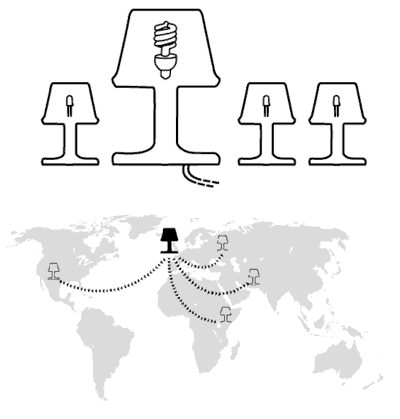
Figure 5: The Good Night Lamp: each lamp has a corresponding lamp in a different scale, which are connected remotely. When lighting the lamp, its correspondents will also have the light turned on, indicating that the person is at home. (http://www.goodnightlamp.com)
The designer Alexandra Deschamps-Sonsino, who created the lamp, believes that the way people live in society is changing; we now have a constant need of being accessible. In fact, in recent years it’s noticeable the growing popularity of social network sites like Facebook, Orkut, Twitter and instant messengers such as MSN Messenger, Skype, from which it’s possible to keep in touch with our friends, even those that we don’t see very often. Using these services it is possible to monitor the daily routine of our friends, expressed through their posts, their comments, photographs and other personal information made public online. Similarly, the increased use of mobile phones has generated a sense that we are always accessible, traceable, linked to these devices in such a way that they have been called “digital leashes” (Weerakkody, 2008). This type of behavior reinforces what Deschamps-Sonsino calls a feeling of being always on, sometimes off. The designer believes that in the future “we will learn to share parts of our lives with our families, friends and lovers in more subtle ways with the help of an ever sensitive, invisible and intelligent technology”. (Deschamps-Sonsino, 2008)
Here we see the application of a principle present in many instant messengers, in which the interfaces usually present a list of the user’s acquaintances, named “contact list”. Each person in the contact list has his/her status indicated by an icon. If a person is online, with the program running, but is busy on other tasks, he/she can change his/her status so that the program will display an icon indicating that the person is busy. Similarly, there are visual conventions for different states of the users (online, invisible, busy, available, away, etc.).
The appropriation of this principle, used in instant messengers, to visually indicate the status of a person in the system (in the case of Good Night Lamp, the light turned on indicating the presence, the light turned off indicating that the person is absent) applied to an object as ordinary as a lamp is an example of an ambient information system. An information system integrated to the environment, with the amount of data reduced to a minimum so that the communication does not interfere with other tasks, staying on the periphery of our attention. The instant messengers, so far, are computer programs that run mostly in “conventional” computers and imply particular contexts of use, which in no way resemble the calm technology approach. The Good Night Lamp becomes part of the house, working without interfering with the actions of its residents, and conveys the sense of presence and proximity with people far away. Although in the current proposal only two binary situations are represented (on/off or present/absent), it could be possible to create other states, using variations in brightness, glowing effects, so that each light situation would indicate a different state of the user (present but busy, for example).
Thirsty Light
This project aims to help on the maintenance of houseplants by constantly monitoring the plant’s soil to check its moisture, and warning when it is necessary to water the plants. The apparatus consists basically of a rod with a bulb containing a LED alert at one end and a humidity sensor at the other end. The operation is relatively simple: bury the pod with the sensor in a potted plant and it will measure the soil’s moisture. When the moisture reaches a certain level, considered low for the maintenance of the plant, the light at the opposite end of the probe starts blinking. The lower the humidity of the soil, the faster the LED flashes, indicating the urgency of watering the plant. The whole system is based on technology called Drypoint, consisting of the humidity sensor and the digital circuit contained in the upper bulb, which receives and interprets the information sent by the sensor, and makes the LED flashes according to parameters received. The sensor works with 5 different levels of moisture, allowing it to be adapted to specific plant’s needs.
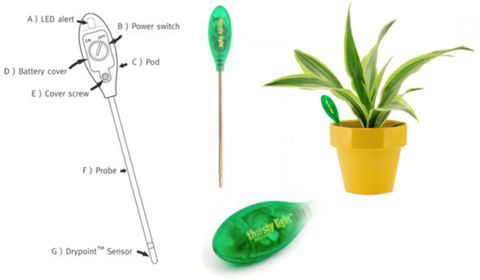
Figure 6: Thirsty Light, appliance designed to monitor the moisture of the soil and alert you when the plants need to be watered. (http://www.thirstylight.com)
Although the system is relatively simple, it is still necessary that the person pay attention to the plant’s characteristics and specific needs. While some species prefer more moisture, others survive better with less water. On the product’s website there is a disclaimer, advising the user to pay attention to the behavior of the plants in order to set the device properly, according to the characteristics of each species. If a plant absorbs moisture faster than others, the rod should be positioned with the sensor closer to the surface, a region that tends to dry faster.
As we can see, even though the Thirsty Light can assist in the maintenance of home plants, it is still necessary to have some knowledge about each plant’s needs, at least on the early stage when it is necessary to perform a “fine tuning” on each probe, by placing the sensor on a position that best responds to each plant. But once these initial adjustments are made, the behavior of the system is quite non-intrusive, blending into the surroundings while at the same time constantly monitoring the condition of the plant’s soil, and thus, acting as an ambient information system. It gathers data and presents it to its user without disturbance.
Ladybag
Developed by students of the School of Interactive Arts and Technology at Simon Fraser University, Canada, this project is about an ordinary object, a woman’s handbag. Using electronic components, the proposal is to make a bag as a mirror of its user’s emotions. In this case the bag is classified as an Affective Communication System (ACS). In addition, the bag is able to identify the presence or absence of the most important items normally found in a woman’s handbag, according to its creators: keys, wallet and cell phone [2]. In this case, the bag acts as an Effective Organizing System (EOS).
To act as an Affective Communication System, the bag has to be pressed on specific points, where pressure sensors are located. Once pressed, the sensors trigger the bag’s LED screen, on the outer surface of the bag, displaying an icon corresponding to a different emotional state. For each sensor there is a set of emotional states, which vary according to the applied pressure. The user must memorize the location of each sensor, and the corresponding emotional states, so she can express herself correctly through the Ladybag.
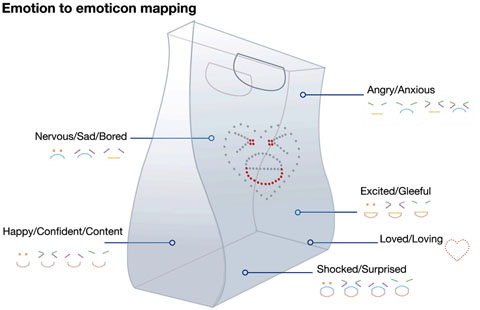
Figure 7: Ladybag: diagram showing the location of the sensors and the corresponding emotions (http://www.ladybag.official.ws/)
To operate as an Effective Organizing System, the bag uses RFID technology to keep track of the objects placed inside, depending less on the user’s action. Basically, objects with radio frequency identification tags (RFID tags) are tracked by a RFID reader in the bag. If one of the items is out of reach, the sensor activates the bag’s LED screen on the outer surface, indicating which object is missing.
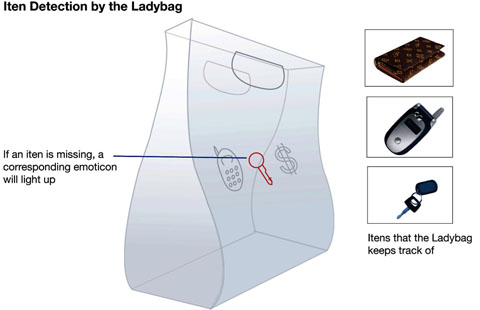
Figure 8: Ladybag as Effective Organizing System (http://www.ladybag.official.ws/)
In both versions of Ladybag, either as an Affective Communication System (ACS) or as an Effective Organizing System (EOS), the outer surface of the bag works as an ambient information system, providing information on the status of both the user’s emotional state or the absence of objects linked to the system, in a discreet and unobtrusive way.
It should be noted that the ACS version of the Ladybag depends on a direct action of the user to enable it to express her emotions. So, while it may be seen as an ambient information system, since it presents information in a discreet way, it is necessary a conscious action from the user for the system to act. This way, it is possible to argue that this project cannot be classified as calm technology [3]. Alternatively, to make the system less depending on the user’s action, biometric sensors could be used to constantly monitor the user’s body, in order to notice changes in her emotional state without requiring a conscious action to display this information.
Discussion and further research
The projects described above have in common the fact that they present non-critical information in a discreet manner, acting mainly into the periphery of our attention. As we have seen, this is particularly interesting considering that computer technology and information systems have become widespread in our lives, and will increase even more in the years to come. Pervasive computing opens up new possibilities for accessing information, by augmenting ordinary objects with computational resources, allowing them to perform many different tasks such as warning us about weather change, letting us know when our friends come home, reminding us that plants needs to be watered, communicating our emotional state. On the other hand, ubiquitous computing also increases the amount of information to which we are exposed. Design has much to contribute in creating novel interfaces that can guarantee that this information overload won’t turn into noise, generate stress or become a burden.
There are many issues that still require research regarding the design of Ambient Information Systems. How to evaluate the effectiveness of a system that should not be intentionally perceived by its users? The most known evaluation methods, which usually are task-oriented, don’t seem to be suitable for this kind of system. Which metrics, heuristics and evaluation methods should be used, considering that in most cases there isn’t an explicit task to be performed by users? Research in the field of visual perception and cognitive psychology (Healey, 2007, 1996; Lima, 2005) and specific studies on Ambient Information Systems (Hazlewood et al, 2008, 2007; Mankoff & Dey, 2003; Tomitsch et al, 2007) are being conducted, bringing a better understanding about this subject, but much remains to be investigated. Is there some kind of information that is more appropriate for this type of system? What does it mean to design for the periphery of our attention, considering that we are not restricted to our vision, that we could also explore the sense of touch, hearing and smell?
The answers to these questions are beyond the scope of this article. It is clear, though, that the design of Ambient Information Systems is a relatively new field for designers, and thus it is essential to deepen the research on this subject. This article is a preliminary result of an exploratory research being conducted on this subject, and the main intention was to stimulate the debate on the Design community about Ambient Information Systems, whose importance tends to grow in the near future.
References
Ambient umbrella. (n.d.) Retrieved March 20, 2009, from http://www.ambientdevices.com
Chipchase, J.; Persson, P.; Aarras, M.; Piippo, P.; Yamamoto, T. (2005). Mobile Essentials: Field Study and Concepting. In: Designing the User Experience 05 (DUX 05). Retrieved March 4, 2009, from http://www.janchipchase.com/blog/archives/Chipchase_mefsac_SKETCH.pdf.
Deschamps-Sonsino, A. (2008) The Good Night Lamp. Retrieved March 3, 2009, from http://www.goodnightlamp.com/
Hazlewood, W.; Coyle, L.; Consolvo, S. (Org). (2007). Workshop at Pervasive 2007: Designing and evaluating ambient information systems. In: Proceedings of The 5th International Conference on Pervasive Computing. Toronto. Retrieved January 9, 2009, from http://www.informatics.indiana.edu/subtletech/.
Hazlewood, W.; Coyle, L.; Pousman, Z.; Lim, Y. (org). (2008) The Second Workshop on the Design and Evaluation of Ambient Information Systems. In: Proceedings of The 10th International Conference on Ubiquitous Computing. Seul. Retrieved January 9, 2009, from http://sunsite.informatik.rwth-aachen.de/Publications/CEUR-WS/Vol-402/.
Healey, C. (2007) Perception in Visualization. Retrieved March 20, 2009, from http://www.csc.ncsu.edu/faculty/healey/PP/index.html.
Healey, C. G.; Booth, K. S.; Enns, J. T. (1996). High-Speed Visual Estimation Using Preattentive Processing. ACM Transactions on Human Computer Interaction 3(2), (pp. 107-135).
Hemp, P. (2009, September). Death by information overload. Harvard Business Review.
Hemp, P. (2008, June 27). What’s So Bad About Information Overload? Harvard Business Review. Retrieved October 9, 2009, from http://blogs.harvardbusiness.org/hbr/hbreditors/2008/06/whats_so_bad_about_information.html.
Houaiss, A.; Villar, M. (2001) Dicionário Houaiss da língua portuguesa. (1st ed.). Rio de Janeiro: Objetiva.
Ladybag. (n.d.). Retrieved March 20, 2009, from http://www.ladybag.official.ws/
Lima, R. F. (2005, November) Compreendendo os mecanismos atencionais. Ciências & Cognição, Ano 2, Vol. 6 (pp. 113-122). Retrieved February 19, 2009, from http://www.cienciasecognicao.org/main/main06.htm.
Mankoff, J.; Dey, A. (2003) From conception to design: a practical guide to designing ambient displays. In: O’hara, K.; Perry, M.; Churchill, E.; Russell, D. Public and situated displays: social and interactional aspects of shared display technologies. Dordrecht: Kluwer Academic Publishers, 210-229. Retrieved January 13, 2009, from http://www.intel-research.net/Publications/Berkeley/072920031038_155.pdf
Thirsty Light. (n.d.) Retrieved March 20, 2009, from http://www.thirstylight.com.
Tomitsch, M.; Kappel, K., Lehner, A.; Grechenig, T. Towards a taxonomy for ambient information systems. (2007) In: Proceedings of The 5th International Conference on Pervasive Computing (pp. 42-47). Retrieved January 9, 2009, from http://sunsite.informatik.rwth-aachen.de/Publications/CEUR-WS/Vol-254/.
Weerakkody, N. D. (2008). Mobile phones and children: an australian perspective. The Journal of Issues in Informing Science and Information Technology. Volume 5. Retrieved March 1, 2009, from http://iisit.org/IssuesVol5.htm.
Weiser, M.; Brown, J. S. (1996, July). The coming age of calm technology. Power Grid Journal, v.1.01. Retrieved January 13, 2009, from http://www.johnseelybrown.com/calmtech.pdf.
Weiser, M.; Brown, J. S.; Gold, R. (1999). The origins of ubiquitous computing research at PARC in the late 1980s. IBM Systems Journal, v. 38, n. 4. Retrieved January 14, 2009, from http://www.research.ibm.com/journal/sj38-4.html.
Weiser, M. (1991, January). The computer of the 21st century. Scientific American, 265 (3), (pp.66-75).
Notes
[1] Information systems refers to all the persons, procedures and equipment designed, built, operated and maintained in order to collect, record, process, store, retrieve and display information, using different technologies (Houaiss & Villar, 2001). In this article we are especially interested in (but not limited to) systems that use computer technology to collect, record, process and display information.
[2] Curiously, the three items selected as essential items to be tracked by the Ladybag system, were also identified as the most frequent items to be found in the bags of people from different cultures around the world, according to the research conducted by Chipchase et al (2005). The date of the creation of the Ladybag project is prior to this research, discarding the possibility that the authors of the Ladybag have selected these three items based on the findings of the research conducted by the Nokia research group. The choice of which items would be essential to keep tracking, however, was similar to what was identified by the Nokia research group. The difference is that in the study conducted by Chipchase, besides the cell phone and keys, money was the third item, instead of the wallet.
[3] After performing some user tests, the authors of the Ladybag found that using pressure sensors to report emotional states was considered relatively complex, due to the difficulty of memorizing their location, and to relate each pressure point with a corresponding emotion. As it turned out to demand the user’s attention to fully operate the system, the Ladybag cannot be considered a calm technology device, at least from the standpoint of its users. However, it can be considered an ambient information system as it communicates the emotional state of its user discreetly for those who are around.
Reference to this article
PINHEIRO, Mauro. Designing for the periphery of our attention: a study on Ambient Information Systems. In: DRS 2010 Design Research Society International Conference, 2010, Montréal; Proceedings…CD-ROM. Montréal, 2010.
Pinheiro, M. (2010). Designing for the periphery of our attention: a study on Ambient Information Systems. In: Proceedings of the DRS 2010 Design Research Society International Conference.
![The Drum Drum Show escrita por HeyBae00 [Livre]](http://static.fanfiction.com.br/userfiles/D/3/D/5/capa_850994_1713813037.jpg)









